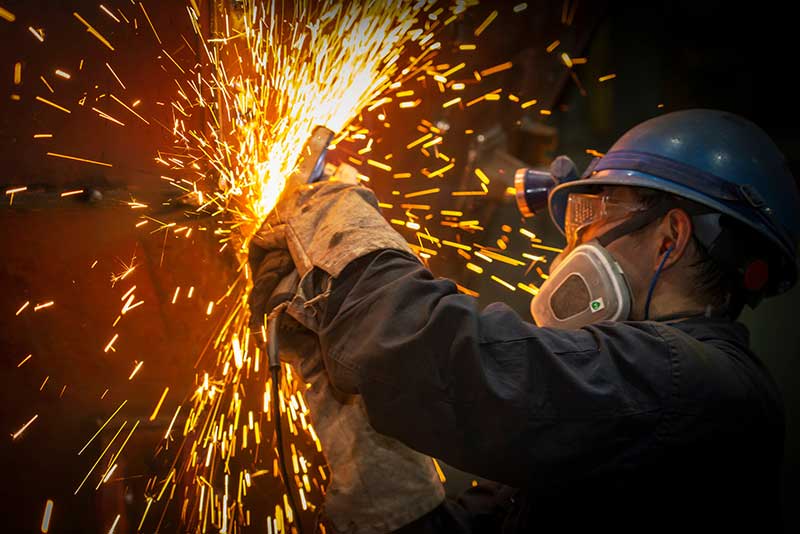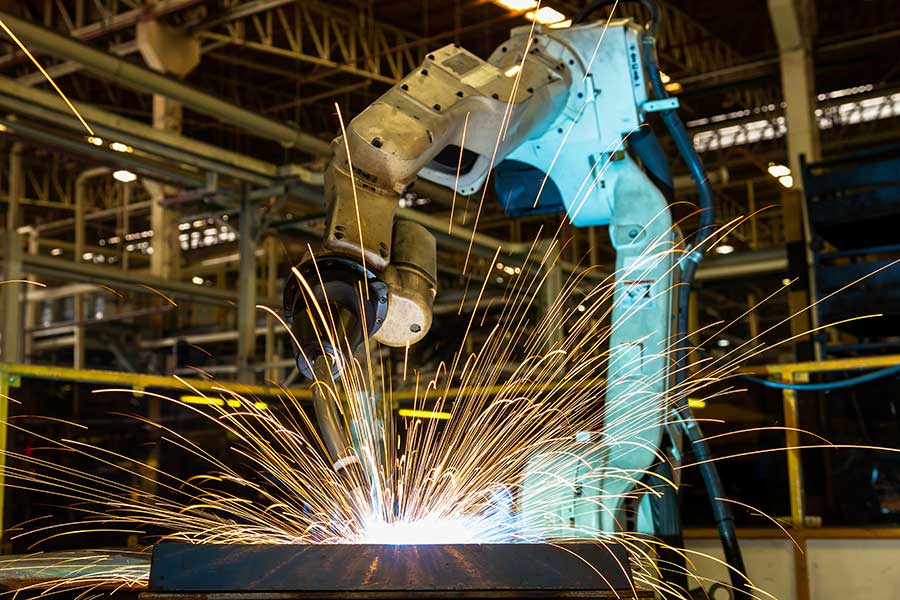Resource Center
Weld Spatter
What is Spatter in Welding?
A very common occurrence in gas metal arc welding (GMAW) is the creation of what welders call “spatter,” which is essentially droplets of molten material that are generated at or near the welding arc. Spatter is generally regarded as a nuisance and is a critical factor to consider when developing an application.
Why is Weld Spatter Problematic?
Spatter can cause numerous problems in most manufacturing processes. The most common problems are:
- Spatter balls sticking to workpieces or tooling
- Spatter burning workers’ clothing and skin
- Loss of material from the arc and weld
- Excessive clean-up of spatter
Most manufacturers strive to reduce the amount of spatter generated, if not eliminate it altogether. To resolve a problem you have to know why the problem is occurring – in this case, what causes spatter.


Where Does Spatter Come From?
Spatter is caused by several factors. The main factor is a disturbance in the molten weld pool during the transfer of wire into the weld. Typically, this is caused by the relationship between amperage and voltage. This is usually seen when the welding voltage is too low or the amperage is too high for a given wire and gas combination. In this situation, the arc is too cold to keep the wire and pool molten, causing a stubbing effect on the wire. This can occur at both high and low current ranges.
Spatter may also be generated as a result of the gas selected. In GMAW, the use of CO2 increases the arc energy and is very cost effective, but it creates more weld spatter. Argon is commonly used to counterbalance the spatter generated from CO2.
WHAT FACTORS CAN WORSEN SPATTER GENERATION?
Additionally, there are a number of other factors that can worsen spatter generation. Some of these conditions relate to consumables, some are torch-related, and others are a reflection of production environments:
- Improper wire feed speed to volts
ratio(the #1 cause) - Poor quality welding wire
- Incorrect gas mixtures
- Poor welding surface conditions
(such as oily parts, paint, rust, etc.)
- Improper torch angle
- Wire stick-out length
- Grounding location
- Wind/loss of shielding gas
- Moisture in the atmosphere
Usually, combinations of these factors cause an imbalance in the amperage and voltage. For example, oil on the parts being welded may cause a welding power supply to receive inconsistent feedback and result in the power supply over- or under-compensating.
At OTC DAIHEN, our D-Series MIG welding power sources come equipped with standard filtering systems to ensure a constant output of welding characteristics to control the relationship between amperage and voltage. Also, our Welbee II advanced welding power sources have low spatter weld modes and SmartPulse technology that eliminate undercut and reduce weld spatter via automatic adjustment of the pulse welding waveform.
What Else Can Cause Spatter?
Other patterns that can generate spatter include:
- In a short arc process, the weld droplet contacts the weld pool and scatters the base metal before fusion.
- When fusion occurs after short-circuiting and the weld bead heats due to a large increase in current. This is essentially the problem described above, where the amperage becomes too excessive for the given welding wire. This is also what most welders like to refer to as the “arc explosion” or the popping that causes spatter.
- An arc repulsion force causes the weld bead to break off and scatter.
- Splashing occurs when a weld droplet falls into the molten pool. This is very common in a globular transfer mode.
- When the weld bead is affected by the magnetic repulsion force of the short circuit in the weld pool.
Most of these factors can be controlled or restricted through various techniques. Read more on how to lower weld spatter on your production line.
